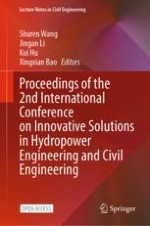1 Introduction
2 Experimental Test
3 Results and Discussion
3.1 Test Results
Corrosion time (day) | Coating thickness (μm) | Mass before test (g) | Mass after test (g) | Corrosion rate \({\text{g}}/\left( {m^{2} \,h} \right)\) | Cumulative loss of thickness (μm) |
|---|---|---|---|---|---|
7 | 100 | 19.452 | 17.369 | 4.428 | 95.375 |
150 | 19.120 | 16.675 | 5.199 | 111.981 | |
200 | 24.318 | 21.888 | 5.166 | 111.264 | |
15 | 100 | 18.312 | 17.097 | 1.205 | 151.007 |
150 | 20.508 | 18.805 | 1.690 | 189.973 | |
200 | 25.255 | 23.929 | 1.315 | 171.978 | |
30 | 100 | 18.257 | 16.852 | 0.697 | 215.324 |
150 | 18.635 | 16.963 | 0.829 | 266.514 | |
200 | 23.983 | 22.325 | 0.822 | 247.894 | |
60 | 100 | 18.029 | 16.192 | 0.456 | 299.420 |
150 | 20.235 | 16.855 | 0.838 | 421.261 | |
200 | 21.397 | 18.668 | 0.677 | 372.833 |
Corrosion time (day) | Coating thickness (μm) | Mass before test (g) | Mass after test (g) | Corrosion rate \({\text{g}}/\left( {m^{2} \,h} \right)\) | Cumulative loss of thickness (μm) |
|---|---|---|---|---|---|
7 | 100 | 16.689 | 15.969 | 1.530 | 32.952 |
150 | 18.079 | 17.402 | 1.439 | 30.998 | |
200 | 19.736 | 17.500 | 4.753 | 102.381 | |
15 | 100 | 16.495 | 15.676 | 0.812 | 70.421 |
150 | 18.103 | 16.878 | 1.215 | 87.057 | |
200 | 19.480 | 18.578 | 0.894 | 143.651 | |
30 | 100 | 16.486 | 15.838 | 0.322 | 100.122 |
150 | 18.256 | 17.641 | 0.305 | 115.217 | |
200 | 19.429 | 17.740 | 0.838 | 220.971 | |
60 | 100 | 16.933 | 16.129 | 0.199 | 136.935 |
150 | 17.844 | 16.781 | 0.264 | 163.889 | |
200 | 20.177 | 19.916 | 0.065 | 232.921 |
Corrosion time (day) | Coating thickness (μm) | Mass before test (g) | Mass after test (g) | Corrosion rate \({\text{g}}/\left( {m^{2} \,h} \right)\) | Cumulative loss of thickness (μm) |
|---|---|---|---|---|---|
7 | 100 | 19.071 | 18.460 | 1.299 | 27.976 |
150 | 20.238 | 19.674 | 1.199 | 25.824 | |
200 | 21.466 | 20.672 | 1.689 | 36.386 | |
15 | 100 | 18.701 | 16.651 | 2.034 | 121.841 |
150 | 19.481 | 16.460 | 2.996 | 164.118 | |
200 | 20.032 | 17.356 | 2.655 | 158.929 | |
30 | 100 | 19.294 | 17.768 | 0.757 | 191.712 |
150 | 20.355 | 19.475 | 0.437 | 204.411 | |
200 | 21.770 | 19.896 | 0.929 | 244.704 | |
60 | 100 | 19.328 | 17.649 | 0.416 | 268.574 |
150 | 19.856 | 18.226 | 0.404 | 279.014 | |
200 | 21.177 | 19.399 | 0.441 | 326.084 |
